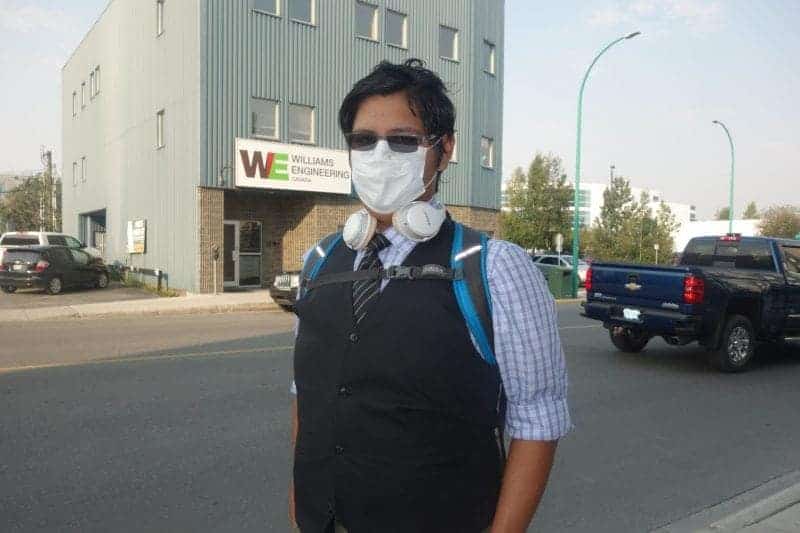As the air quality index shows a high level of risk for Yellowknife, the territory's chief public health official urges people to stay indoors and avoid strenuous exercise.
Smoke from a number of fires south of Great Slave Lake resulted in rapidly deteriorating air quality over the weekend with the federal government's Air Quality Health Index reaching 10+, or a very high risk to health, on Monday.
NWT chief public health officer Andre Corriveau said people may notice eye or throat irritation, or shortness of breath. Other symptoms could include increased coughing or headaches, according to a joint news release by Environment Canada and the GNWT's health and environment departments.
People with chronic diseases, especially cardiovascular and lung diseases, seniors and infants are primary risk groups. Corriveau said homeless individuals - who spend more time outdoors - may also be at risk of developing these symptoms, especially if they also have a chronic disease.
Corriveau urged anyone experiencing acute symptoms to go directly to their health-care provider, the emergency room or the closest health centre.
“We recommend that people stay more indoors, close their windows of their houses if possible,” he said. “If they have an air purifier, to put it on at least to create a bit of a shelter in one or a couple of rooms in the home.”
Corriveau also advised residents to cut down on outdoor physical activities. This could mean different things depending on how active a person is and how their general health is. For some, it may mean slowing down or taking a shorter run and for others, it may mean waiting to take a walk until conditions outside improve.
“The symptoms that we all experience with eye irritation and some throat irritation, (the smoke) creates those very fine particles that are microscopic, touch the mucosa and then create a small irritation, a little bit of swelling,” he said. “But the same thing is happening deep inside the lungs as well, so the deeper you breathe as you exercise, your breath goes deeper into the lungs.”
The heavy smoke in the air may bring back memories for some of the summer of 2014, one of the worst fire seasons in the territory’s history. No deaths or serious injuries were reported that year, although the extreme conditions did prompt voluntary evacuations and closure of Highway 3. Smoky skies were a daily occurrence in Yellowknife for much of that summer.
By Aug. 6 of that year, 344 fires and 28,309 square kilometres of ground had burned, according to Amber Simpson, wildland fire prevention co-ordinator for the Department of Environment and Natural Resources.
This year is mild in comparison, with 223 fires and 6,133 square kilometers burned.
Richard Olsen, manager of fire operations for the Department of Environment and Natural Resources, said the smoke over the capital is coming from a group of fires burning in the South Slave. South winds were carrying the smoke to Yellowknife.
“We're experiencing some of the hottest record breaking temperatures the NWT has seen,” he said. “In addition, things have been really, really dry and there are approximately 50 fires that are still burning the South Slave, in the Cariboo range and portions of the areas around Yellowknife.”
